In fig mass m is lifted up by attaching a mass 2m to the other end of the string while in fig
(b) m is lifted by pulling the other end of the string with a constant force F=2mg then:
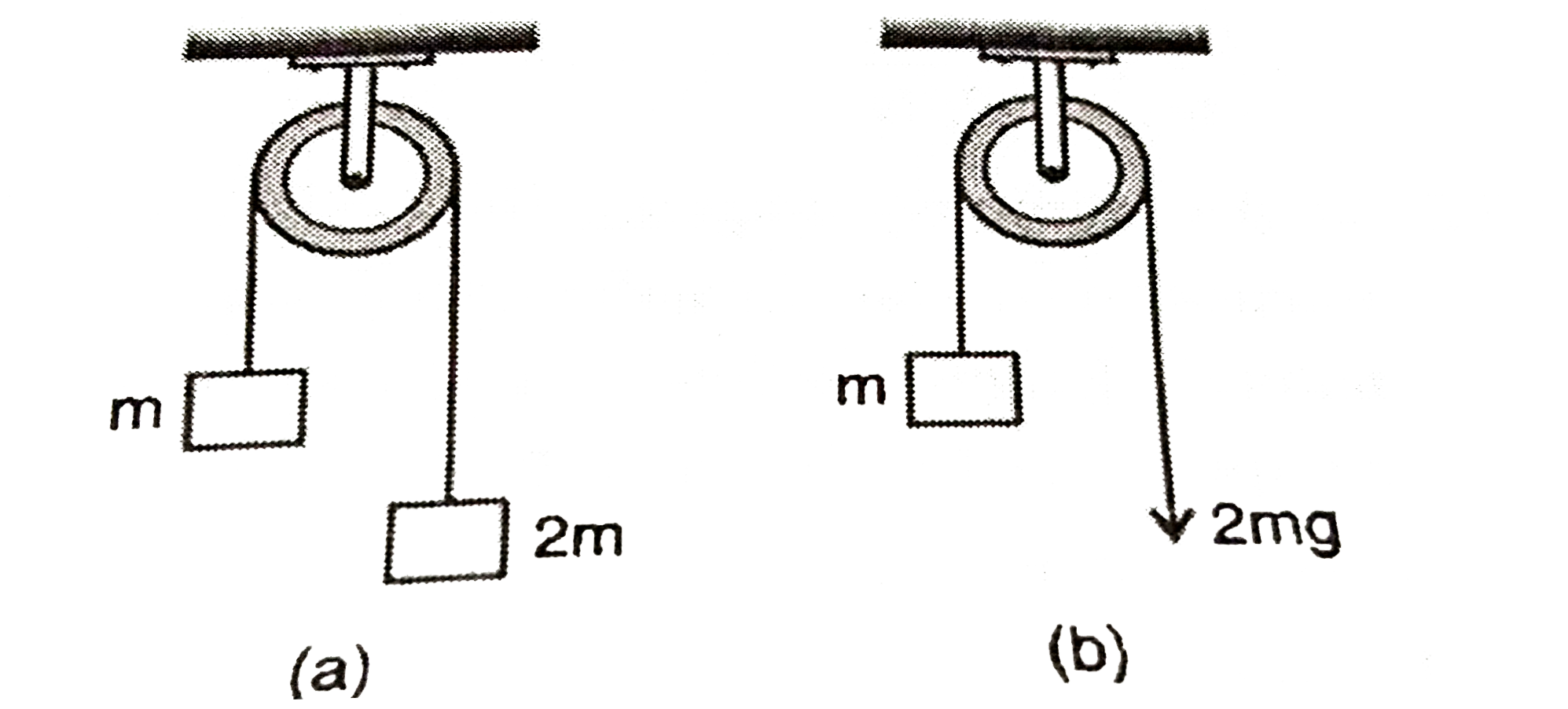
acceleration of m in the two situations is same and non - zero
acceleration of m in situation
(a) is more than that of in situation(b)
acceleration of m in situation
(a) is less than that of in situation
(b)
acceleration of m in the two situations is same and equals to zero
The correct Answer is:C
In situation (a)
2mg−T=2ma
T−mg=ma
In situation (b)
T−mg=ma
Topper's Solved these Questions
- BOOK - GRB PUBLICATIONCHAPTER - FORCE AND NEWTONS LAWS OF MOTIONEXERCISE - More than one choice is correct15videos
FORCE AND NEWTONS LAWS OF MOTION
- BOOK - GRB PUBLICATIONCHAPTER - FORCE AND NEWTONS LAWS OF MOTIONEXERCISE - Assertion- Reason4videos
FORCE AND NEWTONS LAWS OF MOTION
- BOOK - GRB PUBLICATIONCHAPTER - FORCE AND NEWTONS LAWS OF MOTIONEXERCISE - Problem for practice30videos
FORCE AND NEWTONS LAWS OF MOTION
- BOOK - GRB PUBLICATIONCHAPTER - BASIC MATHEMATICSEXERCISE - Problems For Practice35videos
BASIC MATHEMATICS
- BOOK - GRB PUBLICATIONCHAPTER - FRICTION AND CIRCULAR MOTION EXERCISE - Comprehension type11videos
FRICTION AND CIRCULAR MOTION
Similar Questions
The pulley arrangements of Figs. (a) and (b) are identical. The mass of the rope is negligible. In (a) the mass m is lifted up by attaching a mass 2m to the other end of the rope. In (b), m is lifted up by pulling the other end of the rope with a constant downward force F=2mg. The acceleration of m is the same in both cases
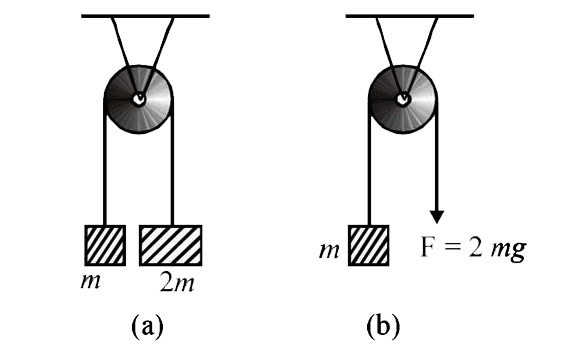 View Solution
View SolutionThe pulley arrangement of fig. are identical. The mass of the rope is negligible. In (a) mass m is lifted up by attaching a mass (2 m) to the other end of the rope. In (b), m is lifted up by pulling the other end of the rope with a constant downward force F =2 mg. In which case, the acceleration of m is more ?
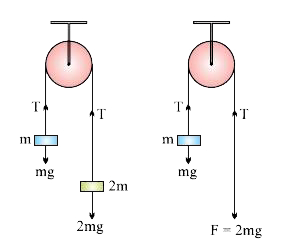 View Solution
View Solution
Knowledge Check
- Question 1 - Select One
Figure shown two pulley arrangements for lifting a mass m . In case-1, the mass is lifting by attaching a mass 2m while in case-2 the mass is lifted by pulling the other end with a downward force F=2mg . If aa and ab are the accelerations of the two masses then (Assume string is massless and pulley is ideal).
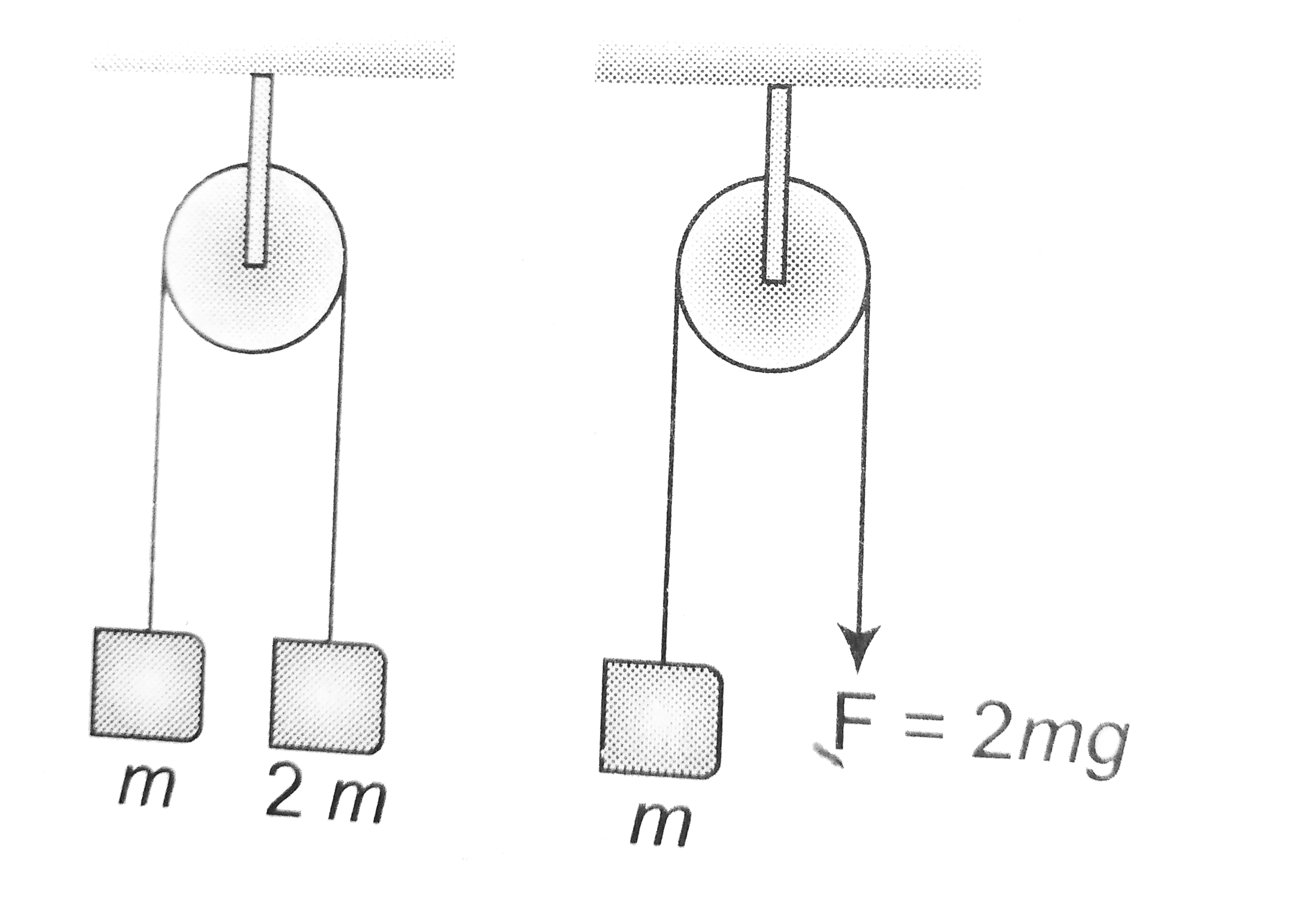 Aaa=abBaa=ab2Caa=ab3Daa=2ab
Aaa=abBaa=ab2Caa=ab3Daa=2ab - Question 2 - Select One
A body of mass m is tied to free end of dtring and whiled in a circle about the other end .If the string suddenly breaks , then
Acentripetal force will vanishBthe body will move along tangent to circleCthe body will move towards or away the centreDboth 'a' and 'b' - Question 3 - Select One
The pulley arrangements shown in figure are identical, the mass of the rope being negligible. In case I the mass m is lifted by attaching a mass 2m to the other end of rope with a constant downward force F=2mg, where g is acceleration due to gravity The acceleration of mass m in case I is
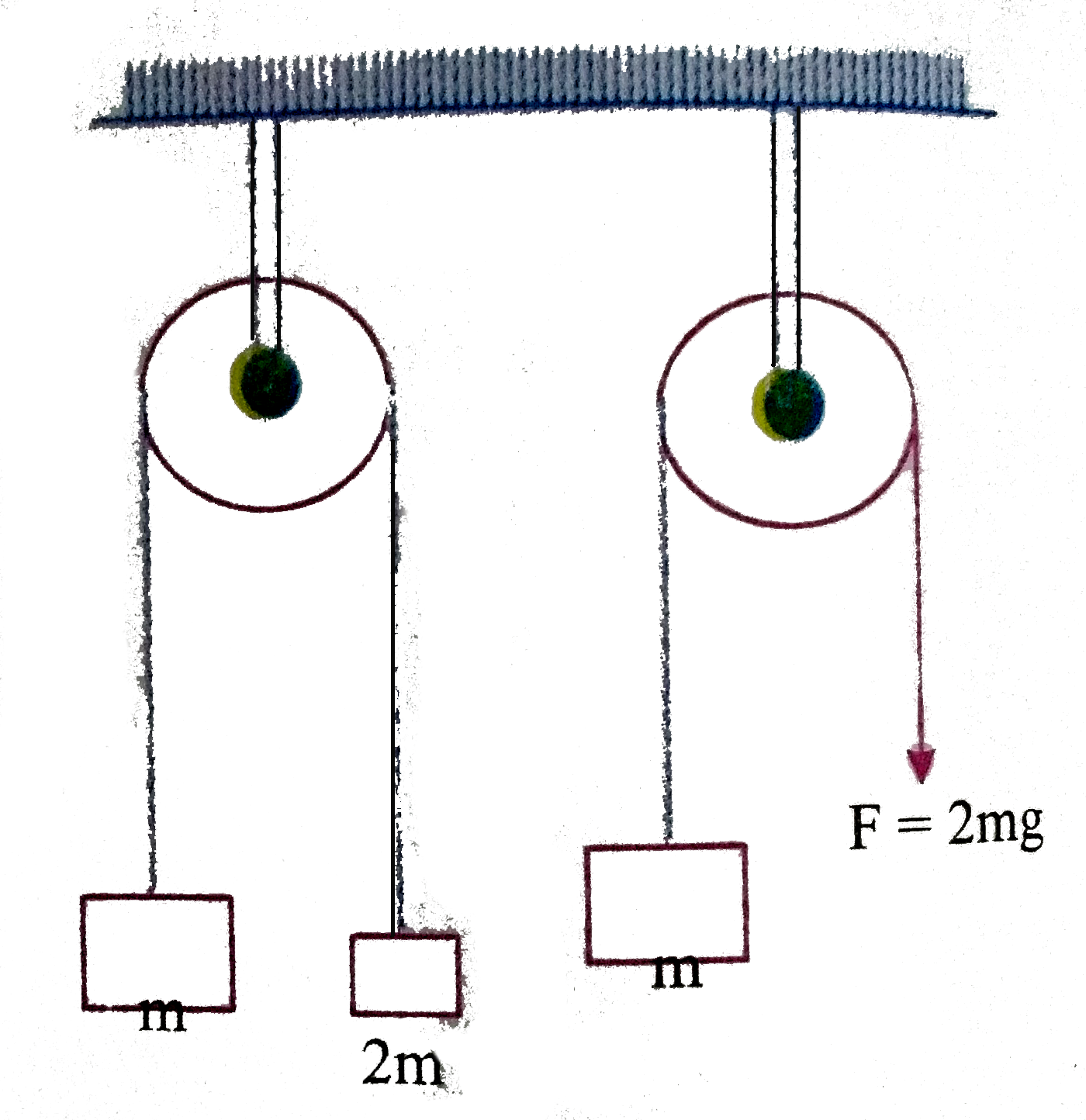 .AzeroBmore than that is case IICless than that in caseDequal to that in case II
.AzeroBmore than that is case IICless than that in caseDequal to that in case II
The pulley arrangements of fig (a) and (b) are identical. The mass of the rope is negligible. In (a) the mass m is lifted up by attaching a mass 2 m to the other end of the rope. In (b) m is lifted up by pulling the other end of the rope with a constant downward force F = 2 mg. Which of the following is correct?
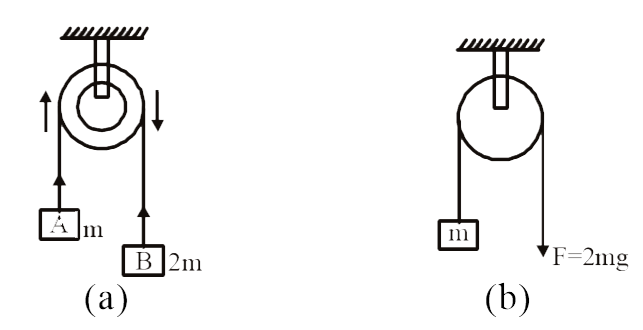 View Solution
View SolutionThe pulley arrangement in Fig are identical .The mass of the rope is negligble in figure the mass m is lifted up by atteched a mass 2m to the other end of the rope . In (b), m is lifed up by pulley the other end of the rope with a constant in both cases
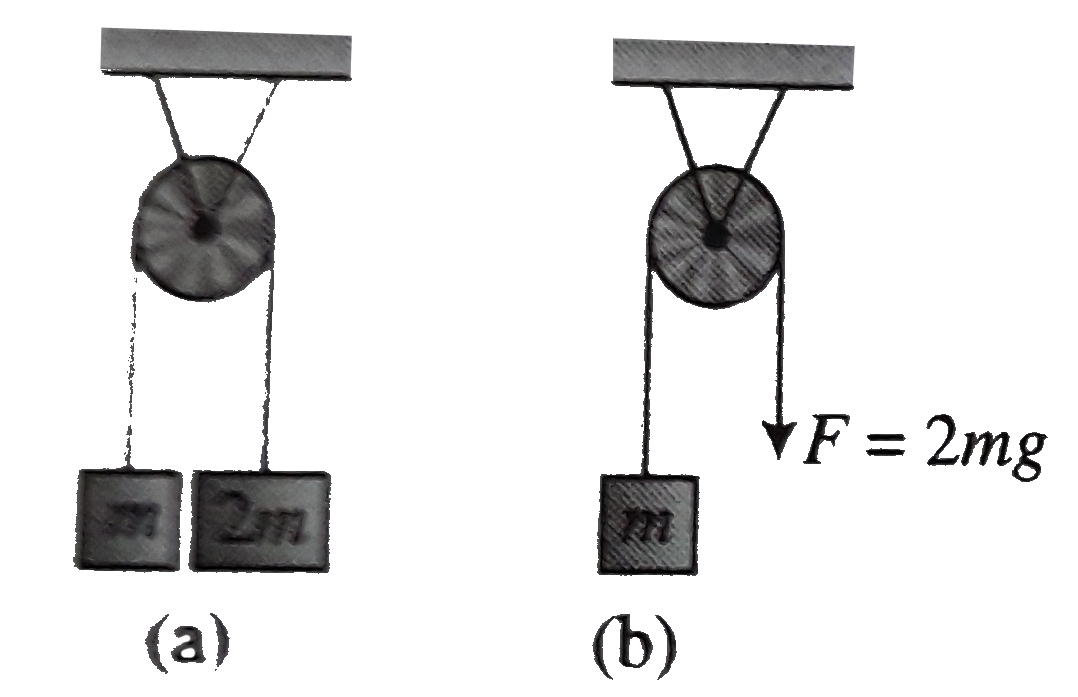 View Solution
View SolutionThe pulley arrangements shown in figure are identical, the mass of the rope being negligible. In case I, the mass m is lifted by attaching a mass 2m to the other end of rope with a constant downward force F = 2mg, where g is acceleration due to gravity. The acceleration of mass m in case I is
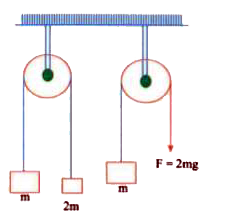 View Solution
View SolutionA block of mass m is pulled by a uniform chain of mass m tied to it by applying a force F at the other end of the chain. The tension at a point P which is at a distance of quarter of the length of the chain from the free end, will be
 View Solution
View SolutionA block of mass m is pulled by a uniform chain of mass m tied to it by applying a force F at the other end of the chain.The tension at a point P which is at a distance of quarter of the length of the chain from the free end,will be
 View Solution
View Solution

